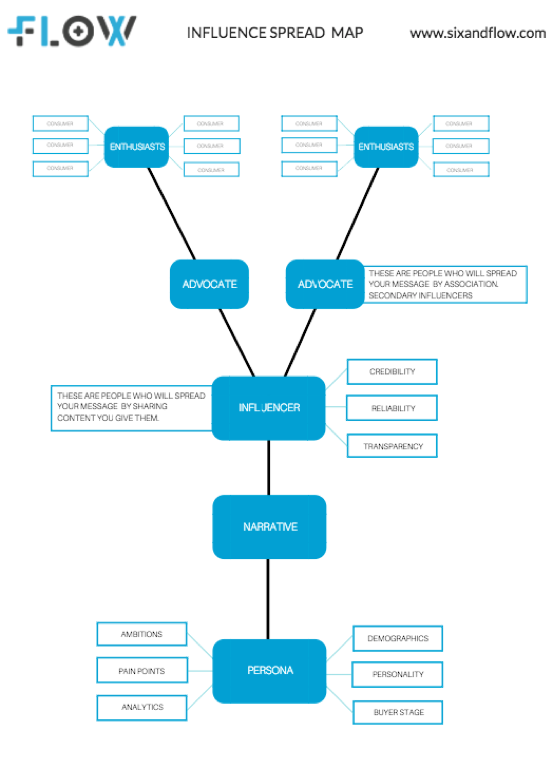






Inbound PR is, in effect, the lovechild of two great marketing strategies. Inbound marketing and PR share the many of the same goals, but we believe the flexibility, accountability and acceleration of inbound can make this approach more effective than traditional PR methods.
Both inbound marketing teams and PR departments want to make their company look good to consumers, and create a lasting impression that allows the company to convert prospects. They use similar methods with blogs, emails and thought pieces. More importantly, both groups create narratives which inform customers.
Times are changing, outbound is outdated and in some cases, it can be potentially dangerous for your brand in a financial and reputational sense. With inbound, you can avoid this and get the best from your lead. Read our blog 'How to create the ultimate inbound marketing strategy' for more information.
A good inbound PR strategy will find positive stories and amplify them, and create the best response to negative stories in order to limit fallout. It’s all about creating a great story, finding people who want to listen and then telling them about it in an engaging way. The ultimate goal of any inbound PR strategy is to get a company to the point where speaking to new clients is easy, because their reputation has already done the talking for them.
So how do you make this happen? Below, we go through seven simple steps to crafting an inbound PR strategy.
-
Understand your strengths and values
Before you start anything, you need to take some time to understand who you are, what you’re offering and the value this holds. By starting at this point, you will be able to drive value to the right audiences, if you don’t know you're offering, you can’t promote this to your potential clients.
With new clients, we start with a value session based around core elements of trust: reliability, credibility and transparency. If a company can translate these three elements into a cohesive narrative, then they will resonate with consumers. If the company is seen to lack in these areas and looks self-interested however, consumer trust will diminish.
Next you need to understand what it is your company can offer to people. Is it of genuine value or is it snake oil? You need to understand what the benefits are for your consumers in the short, medium and long term. Once you have these nailed down, sales conversations will become much easier.
-
Use analytics to understand your audience
Next, you need to understand your audience using data at your disposal. Look at Google trends, Adwords keyword reports, Facebook audience analysis, Google analytics etc. etc.
There are several hundred analytics tools available, so once you have your stack, identify your core metrics and begin to join the dots up to see how your consumer thinks. Once you understand how they are interacting with your brand, you can begin to align your offering to their needs.
-
Align your offering with their needs
Now you have the data and an understanding of what value you can offer to your consumer. Next, you need to align the two. Are you going for a quality over quantity sell? Are you offering something to your clients they need? If yes, then are they aware they need it? By taking the elements from above and examining them, you can link the two of them together in a way that effectively communicates a mutually beneficial relationship.
-
Craft your narrative for their persona group
As we stated above, you need to align the elements of your offering in a way that communicates the mutually beneficial relationship you are offering. To ensure that this resonates, you need to make it relatable to a particular buyer stage, personality and demographic.
Personality makes a big difference in how your narrative will land. You can have four people in a room all in the same demographic group, but they will all favour a different experience due to their personality. When you are crafting an inbound PR strategy then, you need to use thematic analysis to determine what personality you want to appeal to. and then tailor your messages accordingly.
For instance, if you're looking to appeal to logic based thinkers, statistics-led messaging will resonate more.
A strong and relatable narrative will make a huge difference to how your company is perceived, but to really spread your message, you need to speak to teh right influencers.
-
Map your social influence sphere
Working with people who have influence is the best way to spread your message and add legitimacy to the narrative (if done correctly). You need to ensure that the individuals spreading your narrative are reliable, transparent and respected within their space.

A few hours of research looking at the main talkers and shares of your chosen topic will achieve this goal, although tools such as Buzzsumo can help you do this at greater speed. You will also need to map out publications which will be relevant to your audience and try to feature your content here.
-
Organically outreach – accelerate through biddable
Now we have the narrative and we know who to target, it’s time to spread the message. We do this organically by posting in a regular fashion on all applicable social platforms, approaching publications and answering questions on Quora. Reach out to your social sphere and share your content, comment on others content and create conversations around the issues your consumer faces.
This is an effective way to spread your message, however it does take a lot of time to build up a significant following. For this reason, I highly recommend you accelerate this activity using biddable media.
Once we have posted a message on social media, we look at engagement scores, clean for negative reputational damage and trolls, and then accelerate using biddable. We create a audience based on our chosen persona, and use the language of (or sponsor) the post which has the best engagement rates. This ensures that the people who see the message are relevant, and the message will resonate with them, leading to further spread.
Trust me, you don’t want to invest months of time and financial resource creating a ton of great content, social network back-and-forth and link building efforts, only to find out the audience you targeted doesn’t convert.
It’s better to spend a set budget and a month or so to find out which specific audiences are receptive to your message, and what keywords will bring you sales. Run ads to get enough clicks to close a few conversions from your site, then track down the source of those conversions in your analytics. Once you've done this, you can focus all efforts on the audience, keywords, ad-copy variations and imagery that has proven successful.
Once you get to the point where you are generating profit, you can scale the activity and change narratives to drive more conversions. Once you have this activity at a stable point, it’s time to use automation and nurture them through the process to the final sale.
-
Nurture and delight to conversion using automation
Now you have your conversions and traffic, it’s time to shape the traffic into relevant areas. We use marketing automation to perform a range of tasks that improve the quality of conversions. First, we use sequences to send secondary emails to collect more data on the consumer. We then use HLR checks to check the number is live, and use lead scoring to ensure that the sales team only speak to the best quality leads. Once the sale is completed, review messages, relevant content and post-sale offers are automatically sent to ensure that customers are re-engaged and develop positive brand perception.
The results
It’s easy for me to say all these steps will create a great inbound PR strategy, but without some proof it’s all just empty words. Below, I have outlined some results from one 6-month inbound PR strategy using biddable acceleration.
- Return on ad spend – for every £1 spent £23 profit received
- Social following – +427% growth across all platforms
- Organic SEO – core keywords all in top 3 organic rankings
The results speak for themselves. If done correctly, inbound PR can be highly effective for your brand ,not just from a lead generation standpoint, but for all aspects of your business.
Times are changing, outbound is outdated and in some cases, it can be potentially dangerous for your brand in a financial and reputational sense. With inbound, you can avoid this and get the best from your lead. Read our blog 'How to create the ultimate inbound marketing strategy' for more information.








